
Introduction
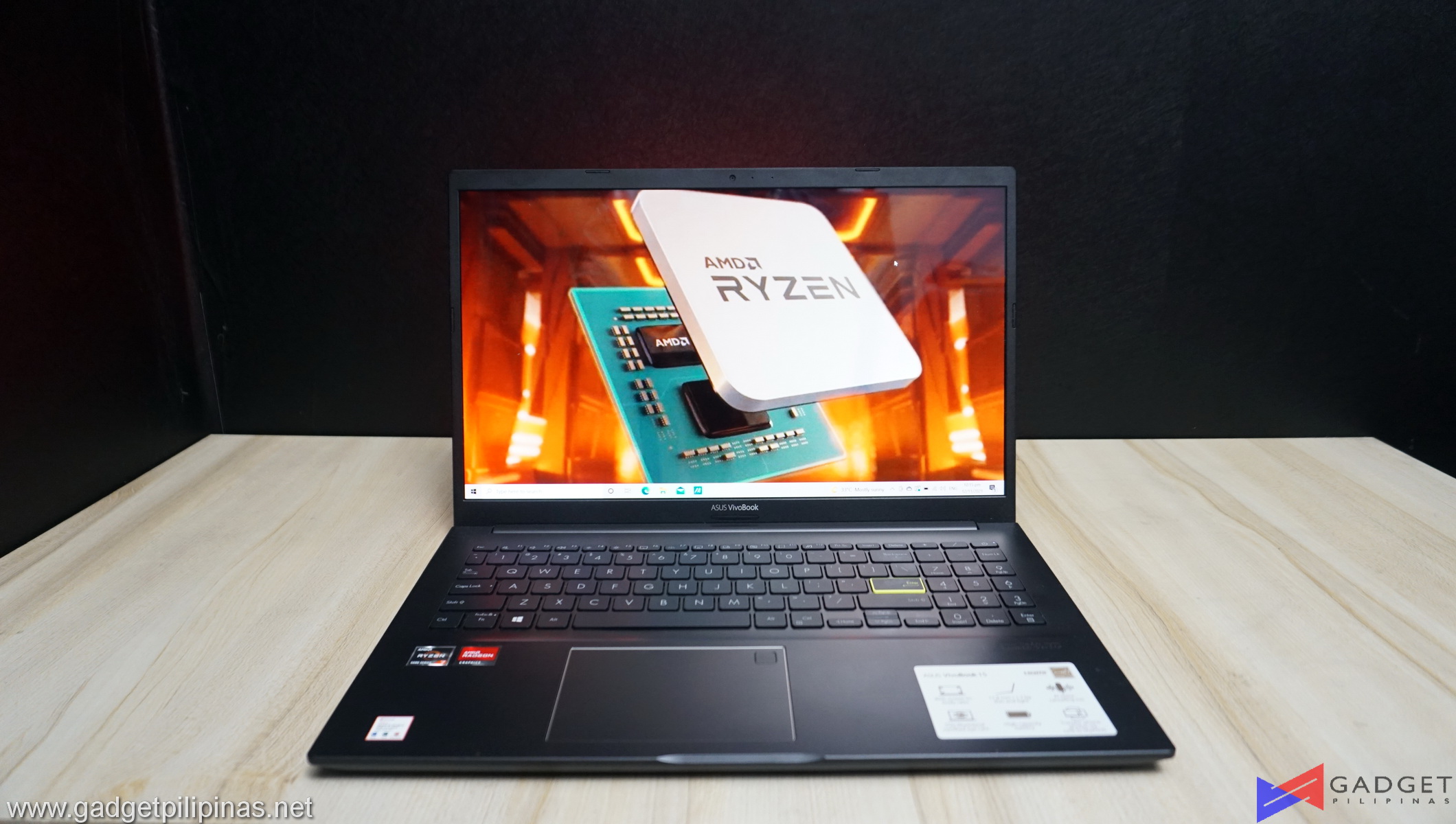
6We recently did our head-to-head comparison of the AMD Ryzen 7 5800H and the Intel Core i7 11700H in the form of the ASUS TUF F15 and TUF A15 Gaming Laptops. Such an opportunity to compare mobile processors is very rare as there are a lot of factors that could affect the performance of the CPUs from component configuration to cooling system and even software. We were only able to compare processors thanks to the F15 and A15 having a 1:1 configuration with of course the exception of the processors. We are lucky to yet again review another mobile processor, the Ryzen 7 5700U, and pit it against the Intel Core i5 1135G7 thanks to the recently launched ASUS Vivobook 15 OLED K513EA and M513UA laptops.
AMD Ryzen 5000U Specs
| AMD Ryzen 7 5700U | AMD Ryzen 5 5600U | |
| CPU Cores | 8 | 6 |
| CPU Threads | 16 | 12 |
| Base Clock | 1.8 GHz | 2.1 GHz |
| Boost Clock | 4.3 GHz | 4 GHz |
| Total L2 Cache | 4MB | 3MB |
| Total L3 Cache | 8MB | 8MB |
| Graphics | Radeon RX Vega 8 | Radeon RX Vega 7 |
| TDP | 10-25W | 10-25W |
Like Intel, AMD’s U-series processors are the low-wattage models that are ideal for entry-level budget laptops and ultrabooks to maximize the laptop’s battery life for an all-day compute or maximum portability. The AMD Ryzen 7 5700U sports two more cores than the 5600U with a lower base clock of 1.8GHz albeit has a higher boost clock of 4.3 GHz.
ASUS VivoBook 15 OLED K513 Specs, Price, and Configuration
| ASUS Vivobook OLED 15 Configurations | K513EA-L11402T | K513EA-L11108TS | M513UA-L1297T | M513UA-L1301TS |
| Processor | Intel Core i3 1115G4 | Intel Core i5 1135G7 | AMD Ryzen 5 5500U | AMD Ryzen 7 5700U |
| Memory | 8GB DDR4 RAM | 8GB DDR4 RAM | 8GB DDR4 RAM | 8GB DDR4 RAM |
| Storage | 512GB PCIEx4 SSD | 512GB PCIEx4 SSD | 512GB PCIEx4 SSD | 512GB PCIEx4 SSD |
| Graphics | Intel UHD Graphics | Intel Iris Xe Graphics | AMD Radeon RX Vega 7 Graphics | AMD Radeon RX Vega 8 Graphics |
| Display | 15.6″ 1920×1080 OLED | 15.6″ 1920×1080 OLED | 15.6″ 1920×1080 OLED | 15.6″ 1920×1080 OLED |
| Price | 34,995 | 49,995 | 42,995 | 49,995 |
Both the Intel Core i5 1165G7 and AMD Ryzen 7 5700U variants of the Vivobook 15 OLED are priced 49,995 and have the same 8GB DDR4 memory and 512GB NVMe SSD. Based on the specs, the M513UA-L1301TS variants seem like the ideal Vivobook 15 OLED model as it sports an AMD Ryzen 7 5700U which has double the cores of the Core i5 1135G7 of the same price range. We already reviewed the ASUS VivoBook 15 OLED K513EA-L1108TS so be sure to check out that review first if you’re planning to secure one for yourself.
BENCHMARK SETUP AND METHODOLOGY
 Gadget Pilipinas’ testing philosophy is to provide detail-oriented results as accurately as possible that our readers can replicate our tests given that these conditions are met. Different benchmarking apps and sequences are used depending on the component or device being tested.
Gadget Pilipinas’ testing philosophy is to provide detail-oriented results as accurately as possible that our readers can replicate our tests given that these conditions are met. Different benchmarking apps and sequences are used depending on the component or device being tested.
We use CapFrameX 1.6.5 as our FPS capture and analysis tool for all our gaming benchmarks. The latest build version of Windows 10 and WHQL certified drivers are used for our benchmarks. Readings such as temperatures and power draw are recorded using HWMonitor, HWInfo64, and other relevant software for cross-checking.
| SPECS | ASUS VivoBook 15 OLED M513UA-L1301TS | ASUS VivoBook 15 OLED K513EA-L11108TS |
| CPU | AMD Ryzen 7 5700U | Intel Core i5 1135G7 |
| RAM | 8GB DDR4 RAM | 8GB DDR4 RAM |
| GPU | AMD Radeon RX Vega 8 Graphics | Intel Iris Xe Graphics |
| SSD | 512GB PCIEx4 SSD | 512GB PCIEx4 SSD |
| Display | 15.6″ 1920×1080 OLED | 15.6″ 1920×1080 OLED |
Like our ASUS TUF Gaming F15 and A15 comparo, both laptops are using the same version of windows as well as their the latest versions of their respective drivers. There were no other applications installed except for the benchmark software and monitoring software. Both laptops were tested on all three power profiles found on the MyASUS app.
Our benchmark list and methodology may change in the future, depending on the industry trend.
Synthetic Benchmarks
- SuperPI 32M Single-Threaded Benchmark
- wPrime 1024M Multi-Threaded Benchmark
- Geekbench 5.4.4 Benchmark
- Cinebench R20 & Cinebench R23 Benchmark
- Google Octane 2.0 Benchmark
- Corona 1.3 Renderer Benchmark
- V-RAY Benchmark
- Blender 2.93 Benchmark
- PCMark 10 Modern Office
- PCMark 10 Extended
AMD Ryzen 7 5700U Synthetic Benchmarks
SuperPI 32M
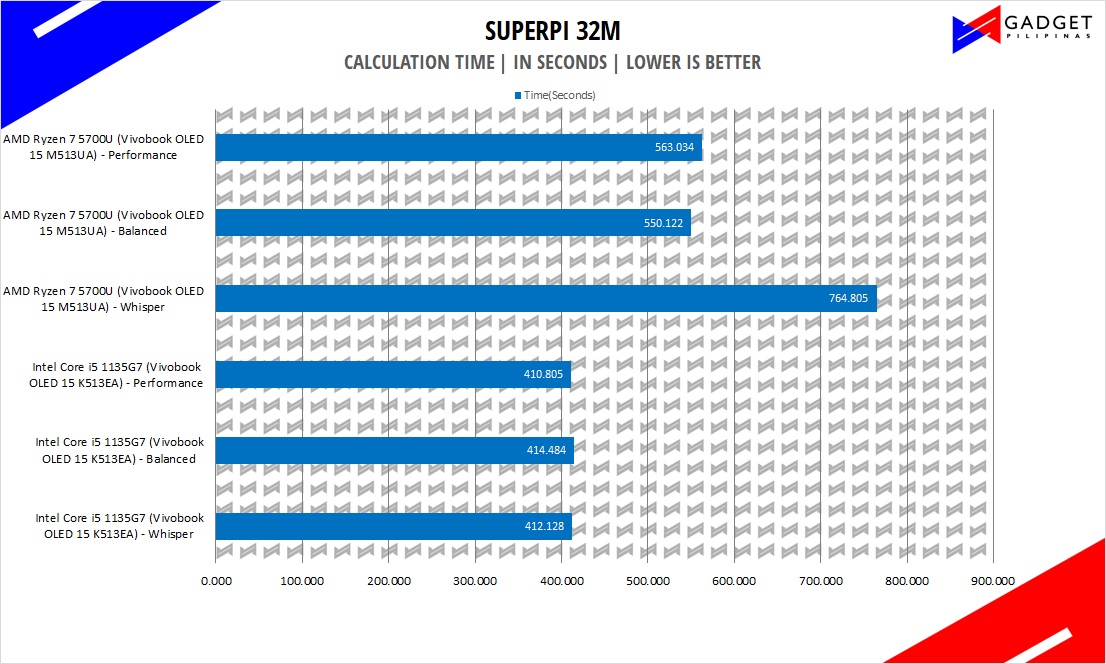 SuperPI is a single-threaded benchmark application that lets the CPU calculate Pi(π) to the nth digit. In this benchmark, we selected the Pi calculation to 32M, the highest available for the app.
SuperPI is a single-threaded benchmark application that lets the CPU calculate Pi(π) to the nth digit. In this benchmark, we selected the Pi calculation to 32M, the highest available for the app.
wPrime 1024M
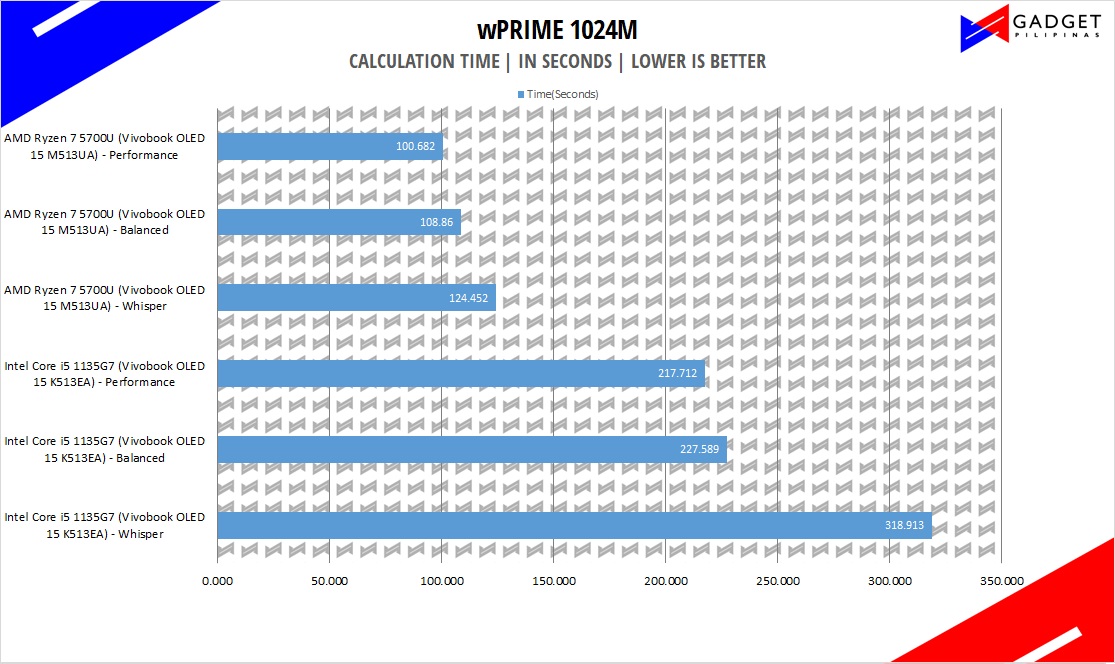 wPrime is a benchmark tool similar to SuperPI, but the former takes on finding prime numbers using Newton’s Method. The benchmark is set to calculate 1024 million prime numbers, and the performance is measured according to calculation time.
wPrime is a benchmark tool similar to SuperPI, but the former takes on finding prime numbers using Newton’s Method. The benchmark is set to calculate 1024 million prime numbers, and the performance is measured according to calculation time.
GeekBench 5
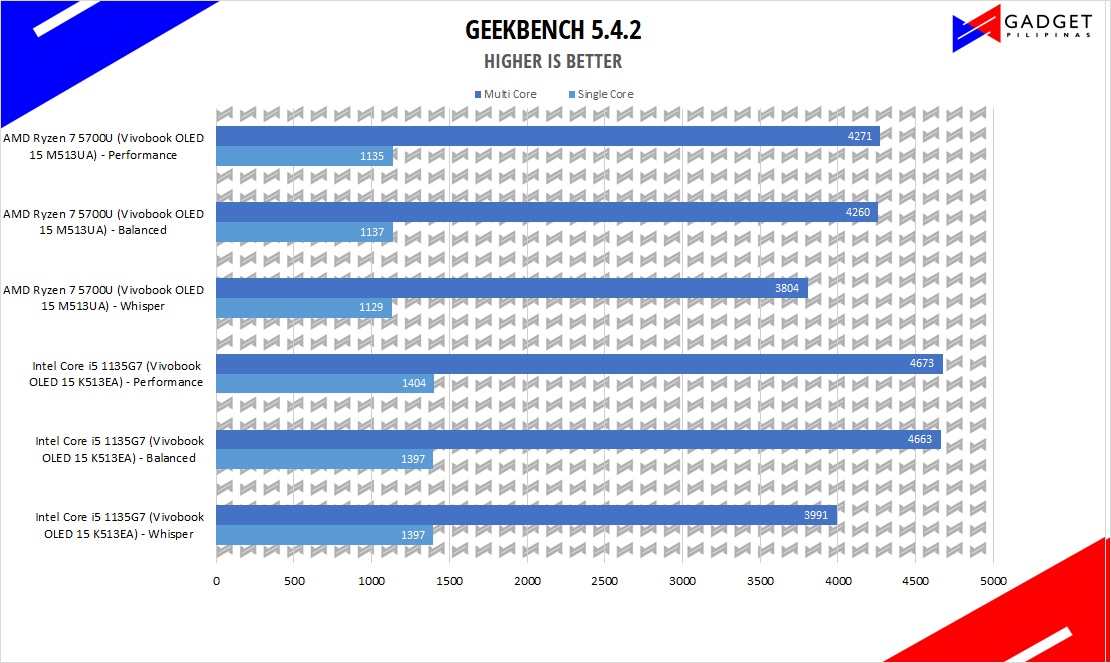 Geekbench is a multi-platform benchmark used to gauge CPU performance and compare them across Windows, Mac, and Mobile. Geekbench 5 is the latest version and doesn’t rely on memory than the previous Geekbench 4, making it a great tool to measure both single-core and multi-core CPU performance.
Geekbench is a multi-platform benchmark used to gauge CPU performance and compare them across Windows, Mac, and Mobile. Geekbench 5 is the latest version and doesn’t rely on memory than the previous Geekbench 4, making it a great tool to measure both single-core and multi-core CPU performance.
CINEBENCH R20 & R23
Maxon’s Cinebench benchmark is one of the most iconic benchmark applications used by reviewers and enthusiasts. The latest Cinebench R20 uses the latest rendering architectures, including Intel’s Embree ray tracing technology and other advanced features from AMD and Intel that allow users to render the same scene on the same hard. Cinebench R20 uses a larger and more complex testing scene than Cinebench R20 by about 8x computational power and requires 4x the memory.
GOOGLE OCTANE 2.0
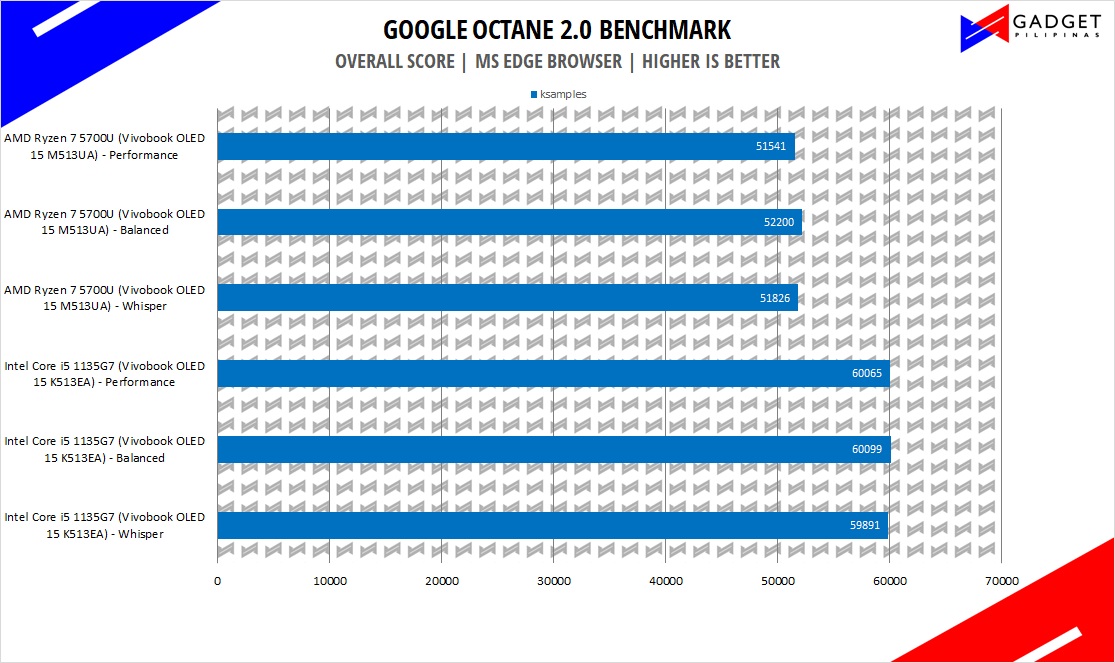 Google Octane 2.0 is a benchmark that measures a Javascript engine’s performance by running multiple tests representing different use cases of JavaScript applications. While Google Octane is retired and no longer maintained, it is still a good representation of today’s dynamic, interactive web applications. Our Google Octane 2.0 is run on Microsoft’s latest Chromium-based Edge browser.
Google Octane 2.0 is a benchmark that measures a Javascript engine’s performance by running multiple tests representing different use cases of JavaScript applications. While Google Octane is retired and no longer maintained, it is still a good representation of today’s dynamic, interactive web applications. Our Google Octane 2.0 is run on Microsoft’s latest Chromium-based Edge browser.
V-RAY
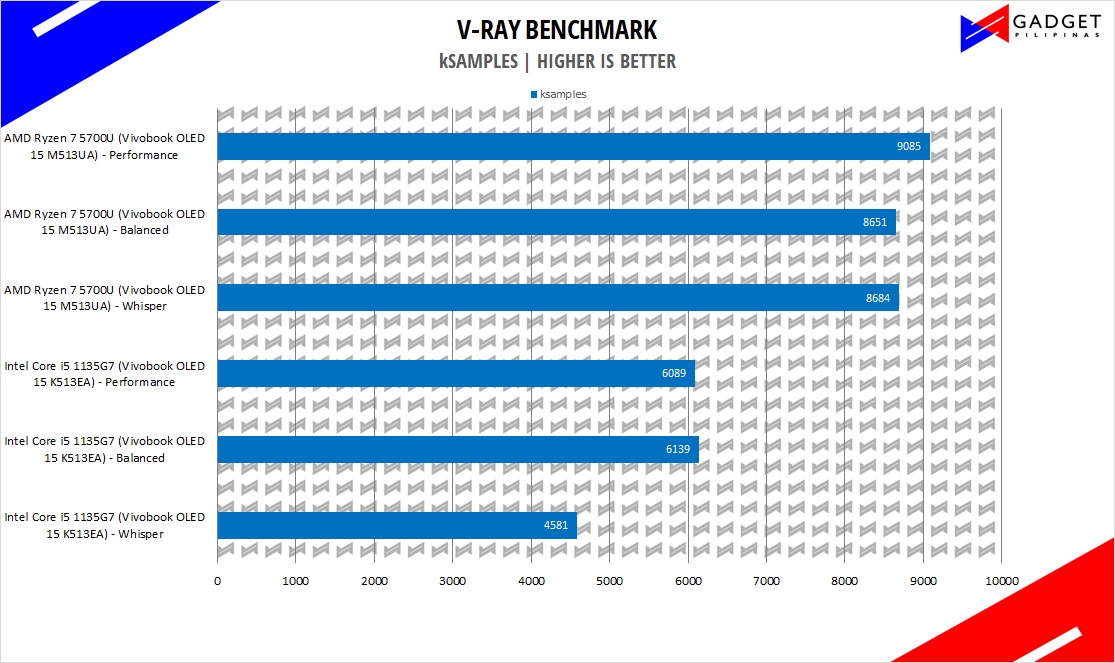 V-Ray Benchmark is a stand-alone version of V-Ray developed by Chaos Group. It is designed to test the CPU and GPU by rendering sample scenes at a fixed amount of time. V-Ray is a plug-in mostly utilized by 3D computer graphics software applications mainly for industrial design, product design, architecture, film, and video game production. V-Ray is not limited to 64-threads as it supports multi and mega-threading.
V-Ray Benchmark is a stand-alone version of V-Ray developed by Chaos Group. It is designed to test the CPU and GPU by rendering sample scenes at a fixed amount of time. V-Ray is a plug-in mostly utilized by 3D computer graphics software applications mainly for industrial design, product design, architecture, film, and video game production. V-Ray is not limited to 64-threads as it supports multi and mega-threading.
BLENDER
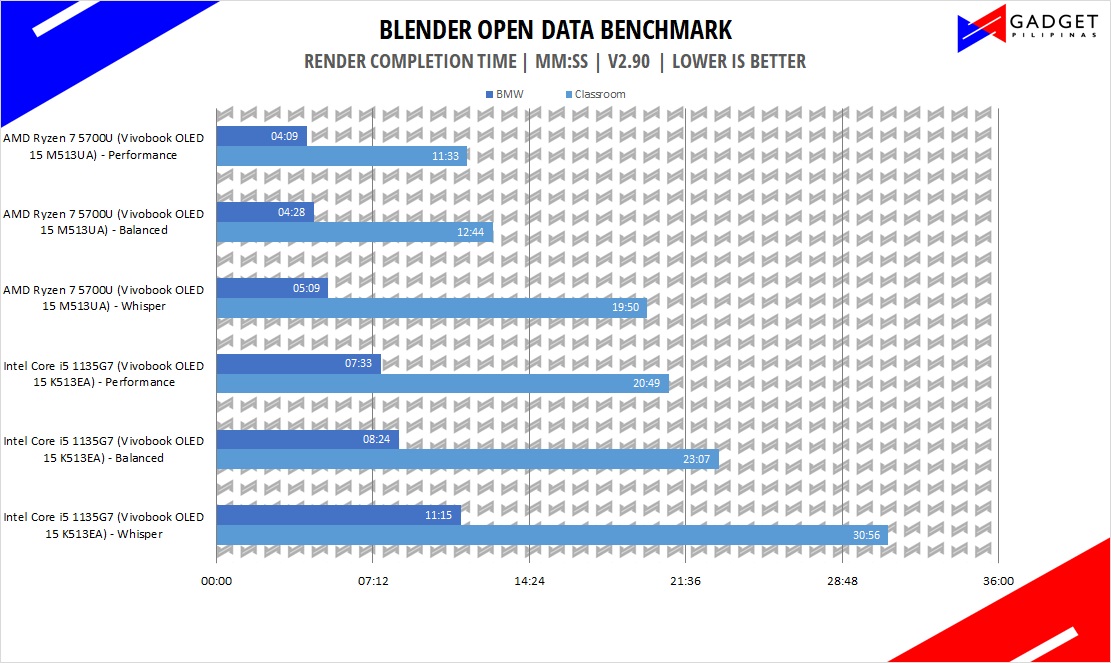 Blender is a widely used, free, open-source 3D creation suite. It supports the whole 3D pipeline process from modeling, rigging, animation, simulation, rendering, and even motion tracking. Blender has become a standard for CPU benchmarks with the BMW27 and Classroom scene most used. This prompted the company to release Blender Open Data Benchmark in 2018, a benchmark-specific version that allows users to run a preset benchmark and share the results online similar to 3D Mark.
Blender is a widely used, free, open-source 3D creation suite. It supports the whole 3D pipeline process from modeling, rigging, animation, simulation, rendering, and even motion tracking. Blender has become a standard for CPU benchmarks with the BMW27 and Classroom scene most used. This prompted the company to release Blender Open Data Benchmark in 2018, a benchmark-specific version that allows users to run a preset benchmark and share the results online similar to 3D Mark.
CORONA RENDERER
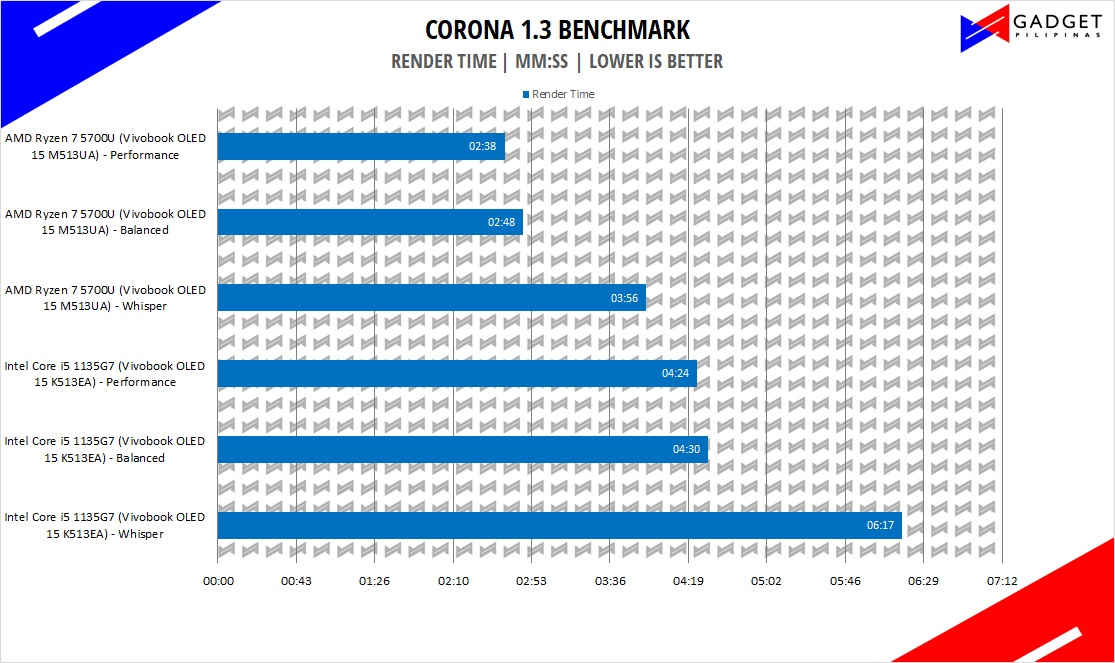 Corona Renderer is an unbiased photorealistic render available for Autodesk 3Ds Max, Maxon Cinema 4D, and as a stand-alone application. Its popularity, similar to Blender, led Chaos Group to develop a benchmark version of the app which runs using Corona Renderer 1.3. Workstation systems, especially CPUs, can utilize Corona Benchmark as up to 72 threads can be used in the benchmark, making it very suitable for CPUs with various price segments.
Corona Renderer is an unbiased photorealistic render available for Autodesk 3Ds Max, Maxon Cinema 4D, and as a stand-alone application. Its popularity, similar to Blender, led Chaos Group to develop a benchmark version of the app which runs using Corona Renderer 1.3. Workstation systems, especially CPUs, can utilize Corona Benchmark as up to 72 threads can be used in the benchmark, making it very suitable for CPUs with various price segments.
PCMark10
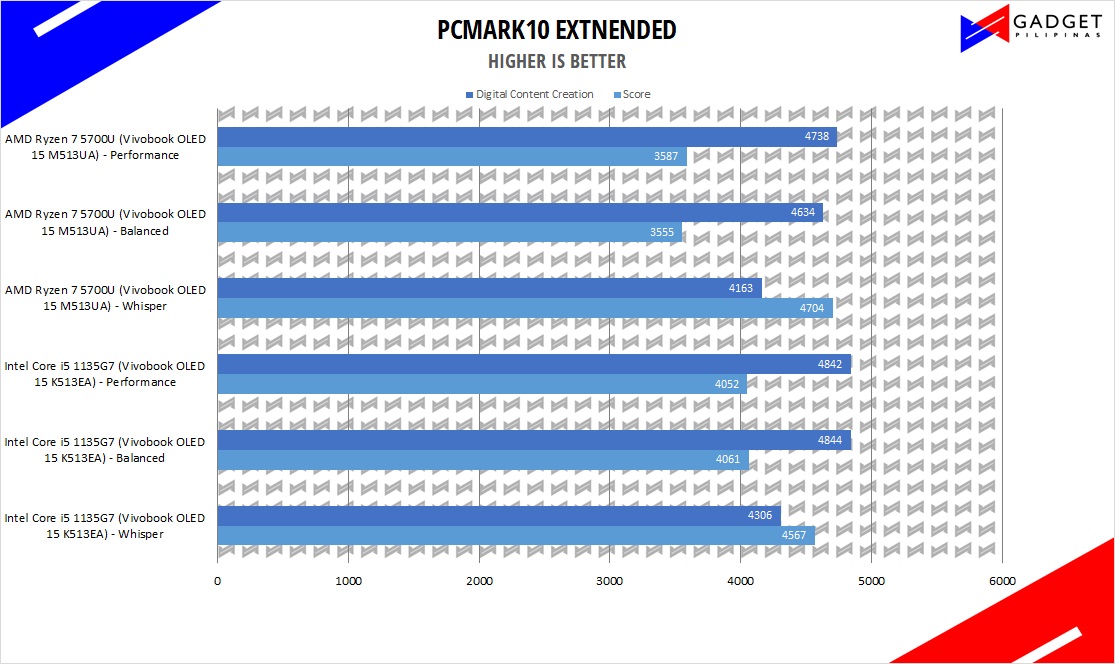 From the same developers of the popular game benchmarking tool 3DMark, PCMark 10 is a benchmarking app for measuring a whole PC’s performance. It covers a wide variety of tests to reflect common tasks performed in a modern workplace. We selected PCMark 10’s extended benchmark and reported both the overall score and Digital Content Creation Score.
From the same developers of the popular game benchmarking tool 3DMark, PCMark 10 is a benchmarking app for measuring a whole PC’s performance. It covers a wide variety of tests to reflect common tasks performed in a modern workplace. We selected PCMark 10’s extended benchmark and reported both the overall score and Digital Content Creation Score.
AMD Ryzen 7 5700U Temps and Battery Life
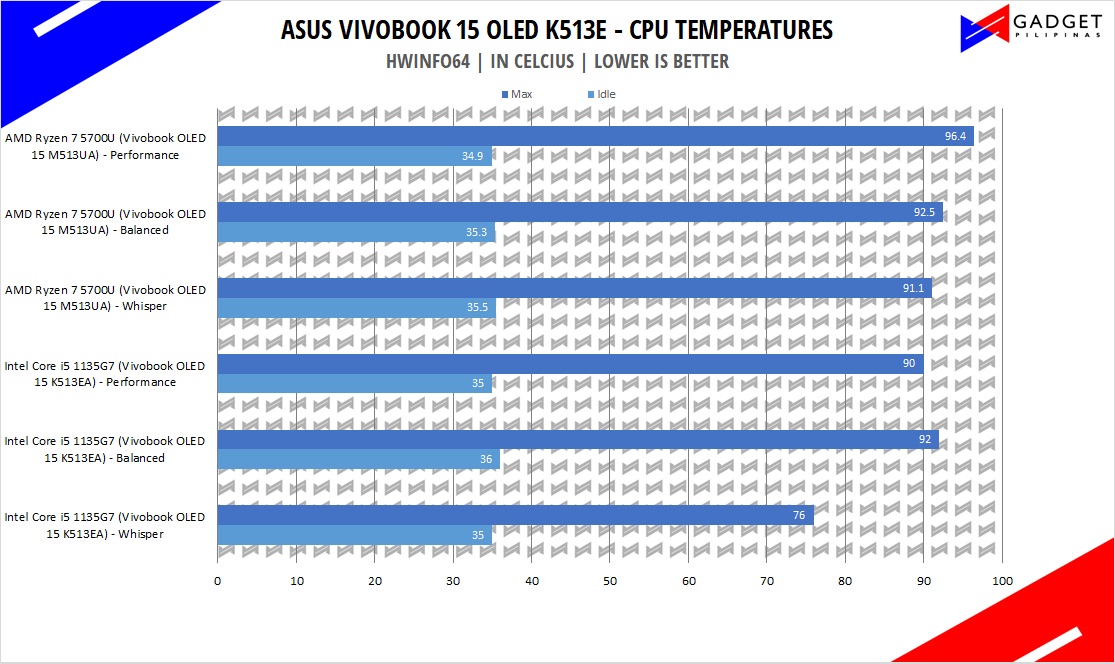 Switching thermal profiles on the ASUS VivoBook OLED 15 M513UA didn’t do any good for the AMD Ryzen 7 57085550U’s thermals as the processor constantly hit over 90°c even at whisper mode. Performance mode peaked at 96.46°c which is very toasty especially for a laptop. Idle temperatures are within the acceptable range considering our ambient room testing temperature of 24°c.
Switching thermal profiles on the ASUS VivoBook OLED 15 M513UA didn’t do any good for the AMD Ryzen 7 57085550U’s thermals as the processor constantly hit over 90°c even at whisper mode. Performance mode peaked at 96.46°c which is very toasty especially for a laptop. Idle temperatures are within the acceptable range considering our ambient room testing temperature of 24°c.
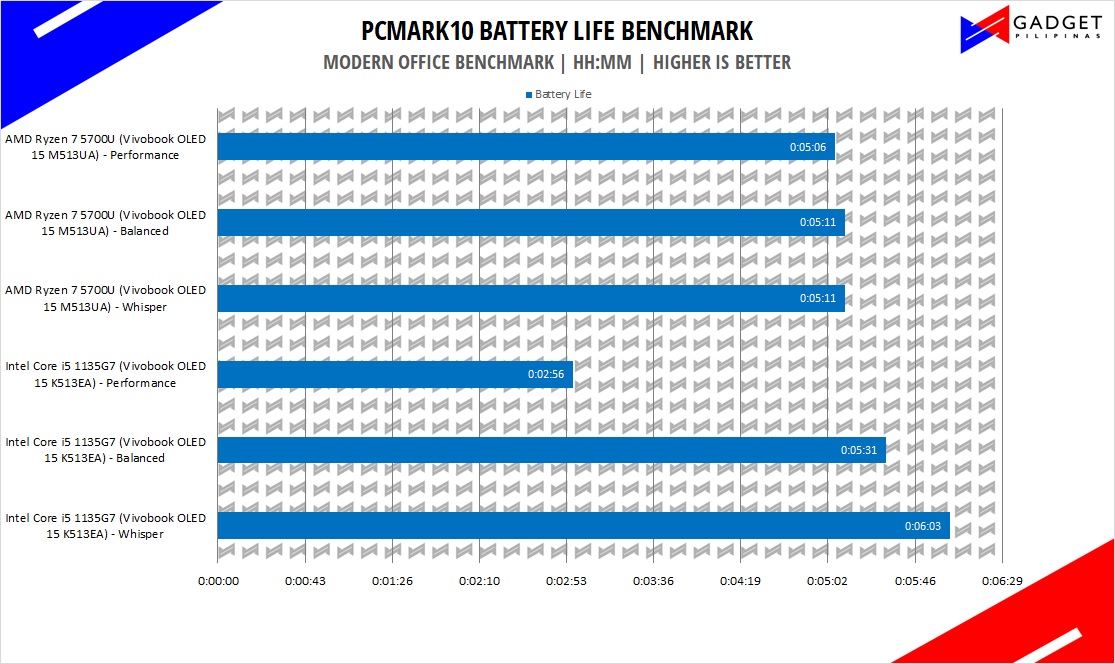 Battery Life seems to be somewhat of an issue with the AMD Ryzen variant of the Vivbook OLED 15. Regardless of thermal profiles, the AMD Ryzen 7 5700U only managed to last around 5 hours in our PCMark 10 Modern Office Battery Life Benchmark. While getting 5 hours of battery life in performance mode is great, we were expecting to squeeze a bit more hours in whisper mode especially when running normal office-based applications and the internet browser. 9
Battery Life seems to be somewhat of an issue with the AMD Ryzen variant of the Vivbook OLED 15. Regardless of thermal profiles, the AMD Ryzen 7 5700U only managed to last around 5 hours in our PCMark 10 Modern Office Battery Life Benchmark. While getting 5 hours of battery life in performance mode is great, we were expecting to squeeze a bit more hours in whisper mode especially when running normal office-based applications and the internet browser. 9
Conclusion
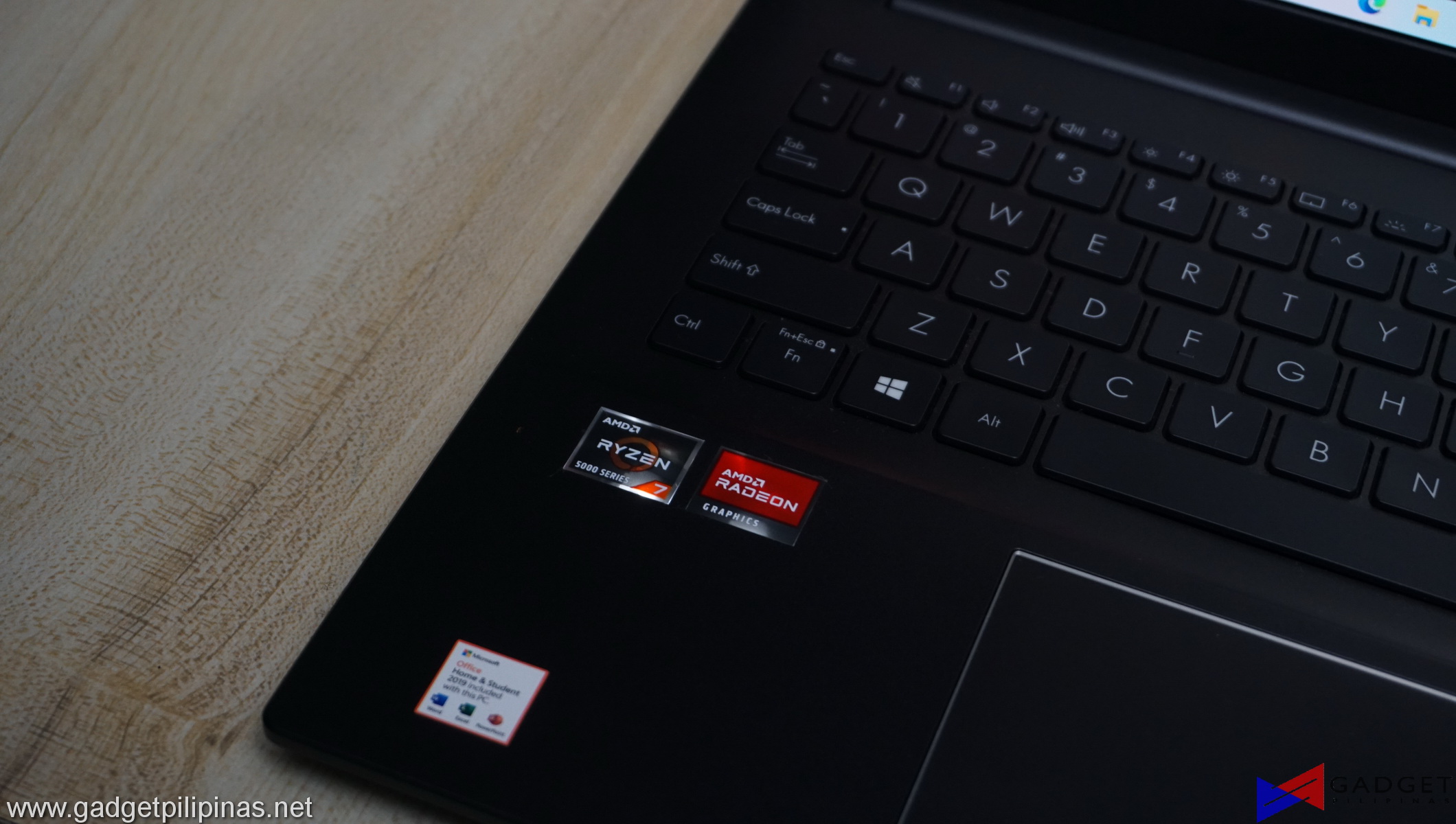 The AMD Ryzen 7 5700U’s performance against the Intel Core i5 1135G7 is a hit or miss in certain applications. The CPU’s performance in whisper mode is absolutely better than the 1135G7 in all aspects but switching to other profiles reduced the 5700U’s lead to a point where other applications would favor the fewer core i5 1135G7 in performance. The silver lining for the Ryzen 7 5700U here is that it’s unbeatable when it comes to rendering and longer multithreaded workloads. Thermals, on the other hand, are much more concerning as potential users of the VivoBook OLED 15 will surely not care about optimal surface placement as most of them will surely use the laptop over cloth which will surely ramp up the temperatures even higher. Its battery life is consistent at five hours despite the processor’s variable TDP of 15-25 watts.
The AMD Ryzen 7 5700U’s performance against the Intel Core i5 1135G7 is a hit or miss in certain applications. The CPU’s performance in whisper mode is absolutely better than the 1135G7 in all aspects but switching to other profiles reduced the 5700U’s lead to a point where other applications would favor the fewer core i5 1135G7 in performance. The silver lining for the Ryzen 7 5700U here is that it’s unbeatable when it comes to rendering and longer multithreaded workloads. Thermals, on the other hand, are much more concerning as potential users of the VivoBook OLED 15 will surely not care about optimal surface placement as most of them will surely use the laptop over cloth which will surely ramp up the temperatures even higher. Its battery life is consistent at five hours despite the processor’s variable TDP of 15-25 watts.
So, is the AMD Ryzen 7 5700U better than the Intel Core i5 1135G7 for the ASUS VivoBook OLED 15? The answer is both yes and no. Our benchmark numbers tell us the 5700U is generally better than the 1135G7 thanks to it having more cores and threads. But its thermals hold it back as the Core i5 1135G7 is able to boost better and much longer especially when the applications are not designed to take advantage of more cores. Its consistent five-hour battery life is a double-edged sword especially for people who want to use the Vivobook OLED 15 for an extended period. That said, the AMD Ryzen 7 5700U is a better choice for users wanting to make the VivoBook OLED 15 as a machine for professional photo & video editing or content creation. Moreover, an average person who won’t tinker with any settings and will use it as a plug and play, out of the box setting device will benefit from the consistent 5-hour battery life as they won’t be losing a few hours if they used the wrong thermal profile as well as not lose much performance regardless of profile. If you’re not one of the people mentioned, then the Intel Core i5 1135G7 is a better choice as it gives you much more flexibility in terms of performance and battery life with its much more discernible power profiles.
The post AMD Ryzen 7 5700U Processor Review ft ASUS Vivobook OLED 15 M513UA appeared first on Gadget Pilipinas | Tech News, Reviews, Benchmarks and Build Guides.
Source: Gadget Pilipinas
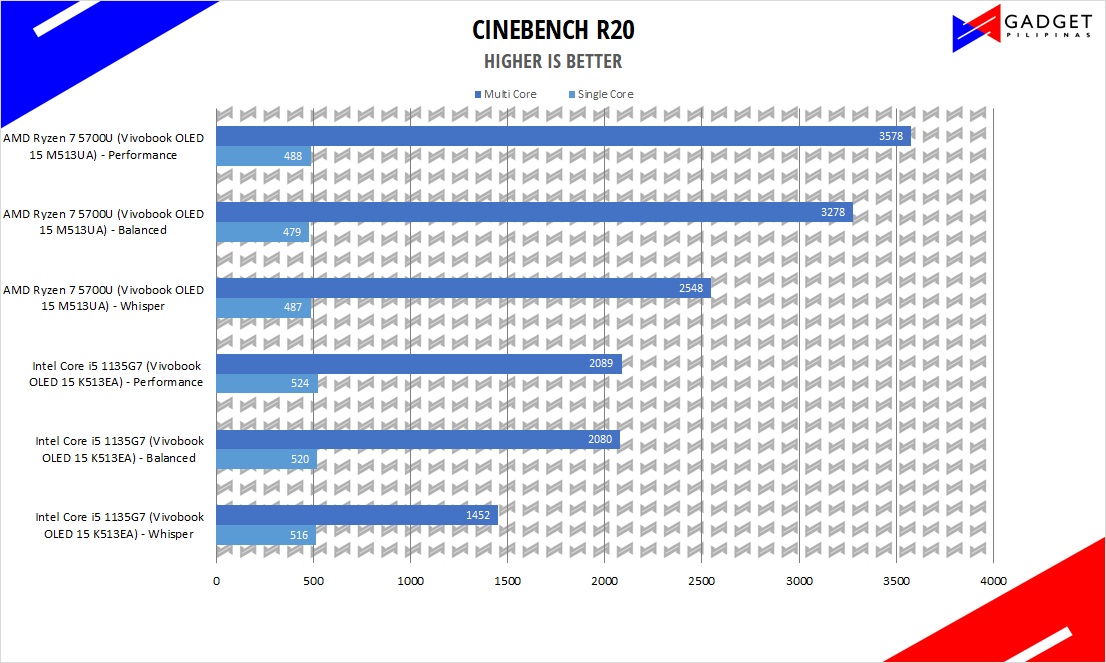
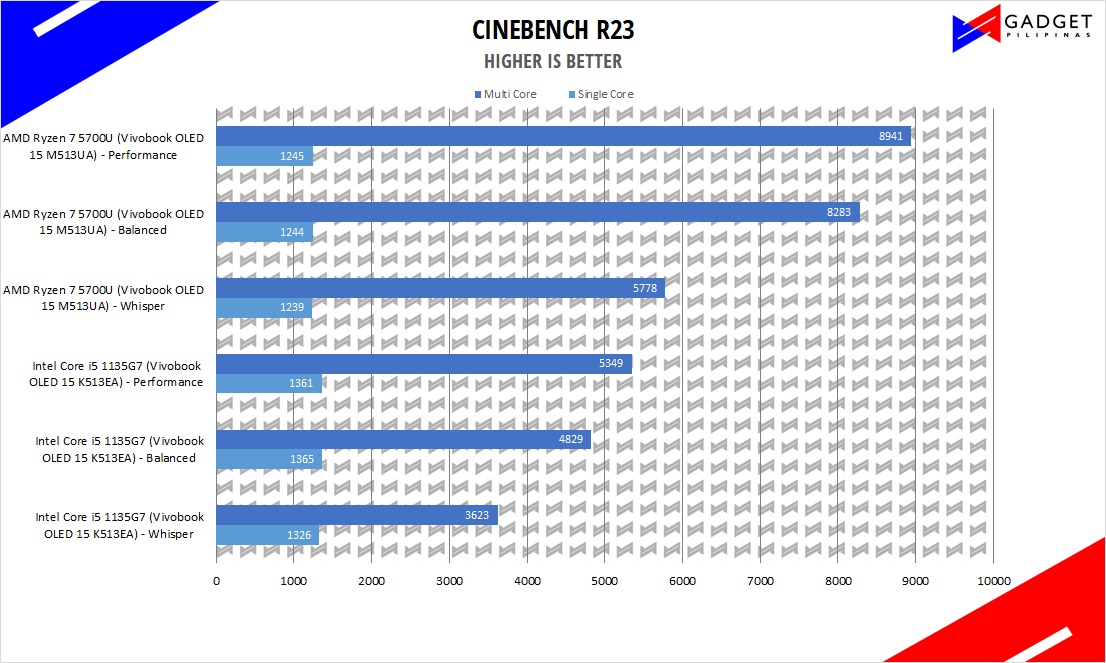
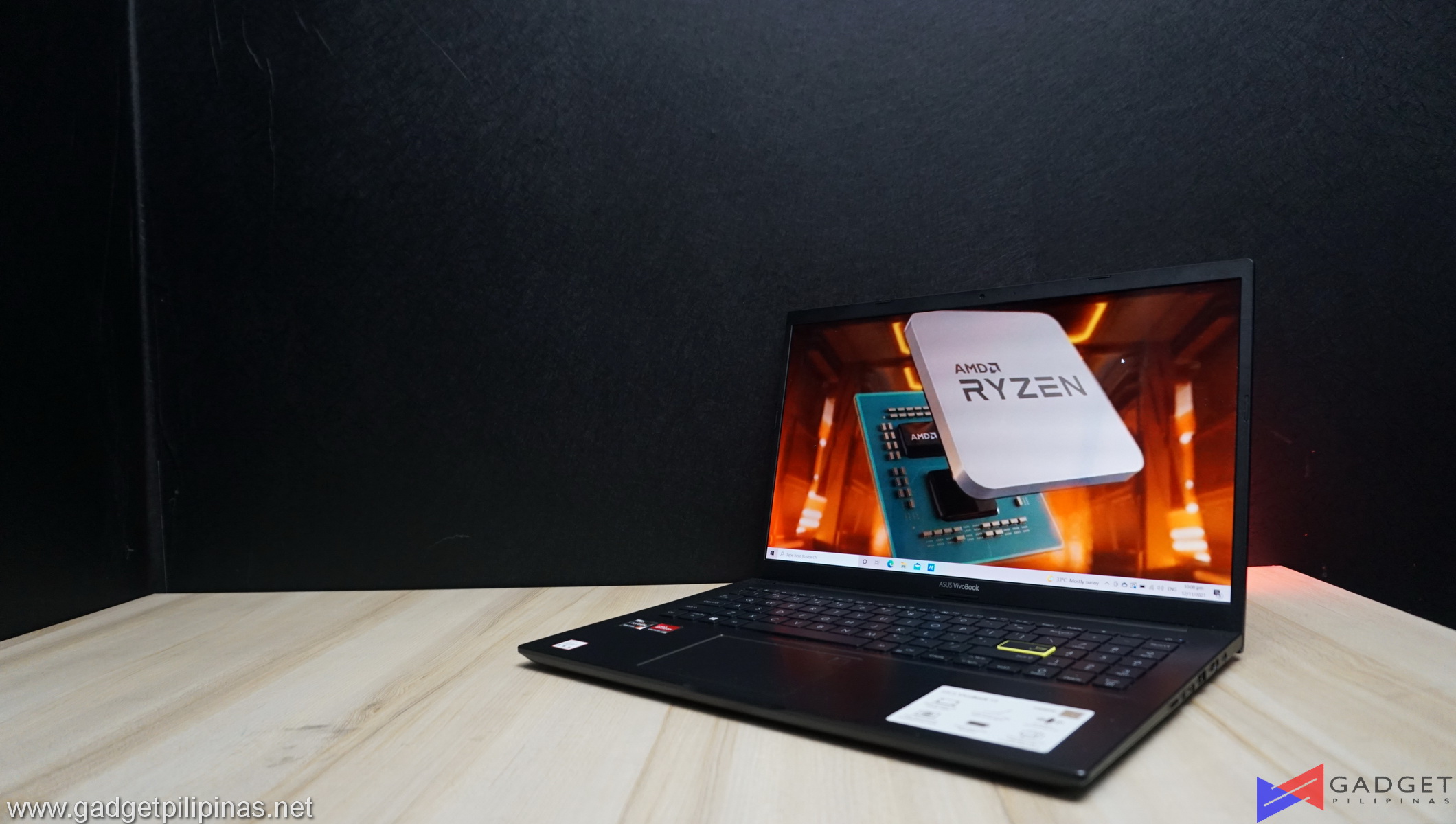

0 Comments